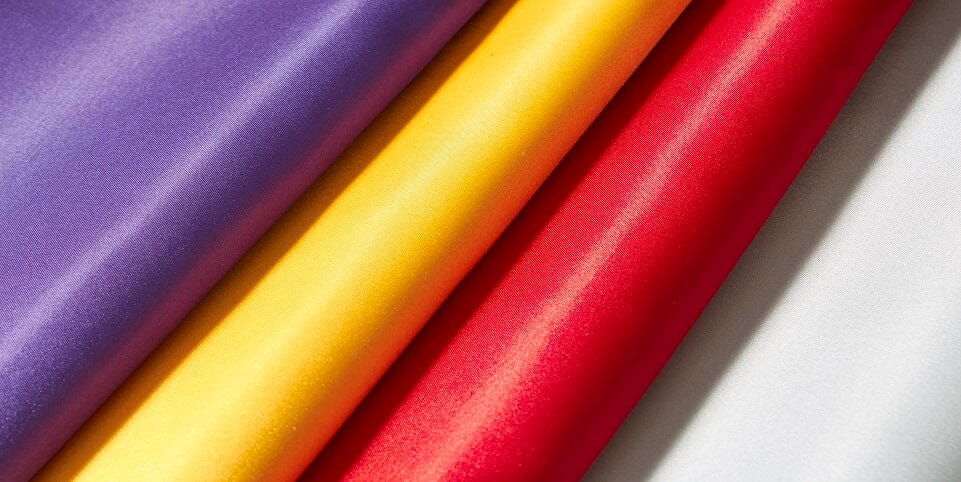Introduction
Fabric softener is an amazing product that reduces static cling, increases fabric softness, and gives it a pleasing fragrance. Fabric softener can be found as a liquid or in the form of dryer sheets, in addition to coming in a variety of different scents, such as lavender, grapefruit, and wildflowers. It is often added to washing machines during the rinse cycle of laundry. When using fabric softener, it is important to follow the directions on the bottle for the best results. When added to the wash cycle, fabric softener coats each fiber with a thin layer of lubricant, which reduces friction between each fiber. This makes fabric softer and reduces the amount of static electricity in the fabric. While improper use may leave behind stains, you can easily and effectively remove stains from your favorite clothes or sheets with the proper techniques. Let's explore how fabric softener makes our fabrics feel soft and smell good.
What Is Fabric Softener?
Fabric softener is a conditioner that is used to make fabrics feel softer, and sometime scented. Having been around since the 19th century, fabric softener was developed as a chemical conditioner to make dyed fabrics softer, since the dyeing process caused them to feel coarse. At first, basic fabric softeners were made from water, soap, and food oil. Soon, fabric softeners for home use began to appear on the market. Due to their chemical makeup, these fabric softeners had to be added to the rinse wash cycle of a wash, because they could not be mixed with laundry detergent. However, with technological and chemical advances in the 1970-1990’s, fabric softener began to be produced from different recipes. These newer fabric softeners are more environmentally friendly, and can even be found in a non-liquid, dryer sheet form. Dryer sheets are revolutionary since they can be added to a dryer machine instead of to the washing machine at its rinse cycle.
Widely available, fabric softener can be found in supermarkets, drugstores, and discount stores. Most fabric softeners are relatively inexpensive and can be purchased in large quantities to save money. Some stores may even carry their own brand of fabric softener.
What Does Fabric Softener Do?
Fabric softener is an essential element of fabric care because it makes textiles softer and sometimes scented. Fabric softeners contain ingredients like quaternary ammonium compounds, fatty acids, and surfactants. These substances allow fabric softener to make your fabric items softer by loosening, preparing, and coating each strand of fiber with a smooth, protective layer. This increases the lifespan of the fabric and prevents fading by keeping the fibers moist, and reducing the friction caused by them rubbing against other things. Fabric softer also reduces static cling, and leaves garments significantly less wrinkly for longer-lasting wearability. In addition to these effects, many fabric softeners also contain fragrances that give clothes a pleasant smell after being washed. Fabric softener can give you an extra boost of freshness, so that you can look - as well as smell - like the very best version of yourself!
When Do You Add Fabric Softener?
Nobody enjoys doing laundry, but it's even worse when the outcome leaves hardened fabric with an unpleasant smell. Thankfully the solution is simple: just add fabric softener. The best time to add liquid fabric softener is during the rinse cycle when using a washing machine. Alternatively, fabric softener sheets are added directly to the dryer when loading it with wet clothes. It is important to note that exposing certain garments, like towels, bathrobes, and bibs, to fabric softener can affect their absorbency. Using fabric softener regularly will help keep your clothes looking, feeling, and smelling great for many years to come.
Fabric softener is generally safe and easy to use. However, when improperly used it can cause stains and irritation to the skin. It’s important to follow the instructions on the packaging when using fabric softener, in addition to taking safety precautions. For example, avoid contact with the eyes and skin, as some fabric softeners can irritate those body parts. Additionally, store fabric softeners out of reach of children and pets to prevent accidental ingestion or contact.
Follow these steps on how to add fabric softener to your laundry. Your laundry will be fresh-smelling, soft, and undamaged.
Steps For Adding Liquid Fabric Softener To Laundry:
- Check the label on your fabric to ensure that fabric softener can be used.
- Read the label on your liquid fabric softener bottle to determine the correct amount of softener needed for your laundry load size.
- Start the washing machine.
- Measure out the correct amount of liquid fabric softener and add it to the washing machine during its rinse cycle.
- Remove your clothes from the washing machine when they are finished. The clothes are now softened, and ready for drying.
Steps For Adding Fabric Softener Sheets To Laundry:
- Add washed laundry to the drying machine, and check fabric labels to ensure that fabric softener can be used.
- Place one fabric softener sheet on top of your wet clothes, inside of the dryer machine.
- Set the dryer to its lowest heat setting, and let it run until your clothes are completely dry.
- Remove the clothes from the dryer and enjoy their pleasant scent and softness!
How To Use Fabric Softener?
-
Cleaning Carpets, Rugs, & Upholstery
Use fabric softener to clean carpets, rugs, and upholstered furniture. In addition to making them softer and more durable, fabric softener can be used to gently loosen dirt, debris, and pet hair from carpets, rugs, and furniture upholstery so that they can be vacuumed or brushed.
-
Removing Wallpaper
In addition to loosening dirt and pet hair, use fabric softener to take off old wallpaper. The chemicals in liquid fabric softener help break down the glue used to stick wallpaper on walls. Just mix equal parts fabric softener to water and apply it to the wallpaper. Wait 20 minutes, and the wallpaper will now be easier to remove.
-
Degreasing & Removing Water Stains
As we have learned, fabric softener is an excellent way to loosen dirt and debris. Fabric softener can be used to make homemade degreasers and cleaners. Fill greasy and burnt pots or pans with water and add a small amount of fabric softener. Let these pots and pans soak for some time, after which they will be easier to scrub. Additionally, fabric softener can be used to break down hard water stains in the kitchen, bathroom, or on windows.
-
Protecting Paintbrushes
Don’t you just hate cleaning paintbrushes. It can be messy, and hard to remove all the paint. Next time, add a splash of fabric softener to your paintbrushes to make cleaning them easier, and to add a protective layer to the brush fibers.
How to Remove Fabric Softener Stains?
Fabric softener stains may appear on your favorite clothes or linens after a seemingly successful wash cycle. These stains occur when too much liquid fabric softener is used, and the excess is not washed out of the fabric. Since fabric softeners are made up of oily compounds that don’t mix with water, they can accumulate to stain the fabric and prevent water from completely rinsing the fabric. Furthermore, these types of stains can easily react with heat from the dryer, which can leave permanent marks on your laundry. Don’t worry, fabric softener stains are easy to remove.
There are several ways to remove fabric softener stains caused by doing laundry. The most common way is to re-wash the fabric. Try using more detergent than usual, and do not use fabric softener. If the stain remains, you can try rubbing a liquid dish soap into the fabric, before giving it another wash. Alternatively, if you don’t want to re-wash the item, you can try spot-cleaning the stain with a mixture of water and vinegar. Simply dab the stained area with a cloth soaked in this mixture and let it sit for several minutes before rinsing it away with cool water. If at this point the stain is still being stubborn, you may need to use commercial stain removers.
The best way to remove fabric softener stains is to avoid causing them in the first place. When washing fabric, make sure to use the correct amount of laundry detergent that corresponds to the size of your load. Next, reduce the amount of fabric softener you normally use during each rinse cycle. Remember to start with a small amount because you can always add more liquid fabric softener, but you can’t take it back. Having a few extra minutes of preparation can go a long way in preventing fabric softener stains from ruining your clothes!
Conclusion
Fabric softener is a great way to make your clothes feel soft and smell fresh. By loosening dirt, fabric softener is able to create a protective and smooth layer on the fabric itself, which makes the fabric feel soft, smell good, and increases its longevity. Just add liquid fabric softener to the rinse cycle of your washing machine or add a fabric softener sheet on top of your wet laundry before starting the drying machine, and watch the magic happen. Remember to always follow the instructions on both the fabric softener and fabric to prevent harm to the fabric or yourself. Fabric softener is a necessary item to have around the house. In addition to making fabric soft, it can also be used for a variety of other applications.
Use fabric softener to make the fabric you buy from our Online Fabric Store last longer! Our extensive textile collection n provides an inspiring selection of fabrics that are sure to bring life to any project
 Transparent
Transparent
 White
White
 Pink
Pink
 Red
Red
 Orange
Orange
 Ivory
Ivory
 Yellow
Yellow
 Gold
Gold
 Brown
Brown
 Green
Green
 Blue
Blue
 Purple
Purple
 Grey
Grey
 Black
Black
 Multi
Multi
 Abstract
Abstract
 African Print
African Print
 Animal Print
Animal Print
 Baby & Nursery
Baby & Nursery
 Buffalo Check
Buffalo Check
 Camo Print
Camo Print
 Celestial
Celestial
 Chevron
Chevron
 Church
Church
 Damask
Damask
 Embroidered
Embroidered
 Floral
Floral
 Geometric
Geometric
 Gingham Check
Gingham Check
 Houndstooth
Houndstooth
 Licensed
Licensed
 Paisley
Paisley
 Plaid
Plaid
 Polka Dot
Polka Dot
 Sports
Sports
 Stripe
Stripe
 Tie Dye
Tie Dye










